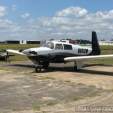With or Without Flaps?
-
Members Online
- EricJ
- atpdave
- JTR
- sdmideas
- Joe Linnebur
- MattCW
- Adam Belle
- Marc B
- Tmack201
- Schinderhannes
- rturbett
- Airterrys
- Hank
- MatthiasArnold
- varlajo
- Ricky_231
- Aaviationist
- Rick Junkin
- KSMooniac
- BlueSky247
- WilliamR
- jetdriven
- Bryan G
- RangerM20
- Greg Ellis
- Flyler
- redbaron1982
- Todd1
- PprophetBirdman
- TCC
- 201Mooniac
- BaldEagle
- FlyingDude
- UteM20F
- Jim Peace
- spaceman39a
- hypertech
- Igor_U
- kaba
- larryb
- exM20K
- MikeOH
- richardbrochu27
- Crawfish
- TNdebdriver
- rahill
- dzeleski


Recommended Posts
Join the conversation
You can post now and register later. If you have an account, sign in now to post with your account.